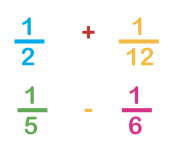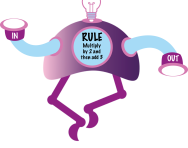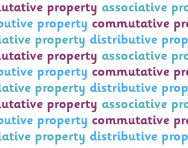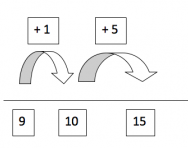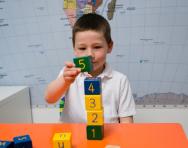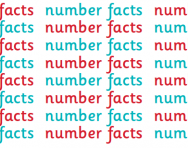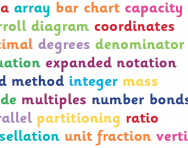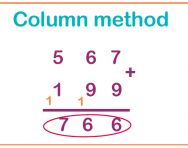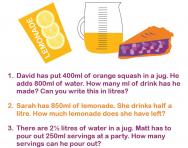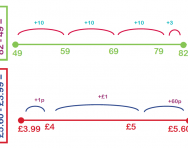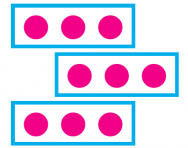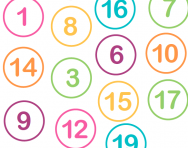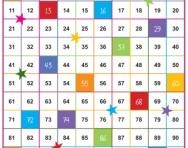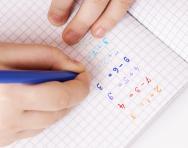Addition articles
A teacher's guide to adding fractions
Adding and subtracting fractions can be a tricky skill to teach. Children often lack confidence in solving equations with fractions, but with the right strategies, we can help children develop a solid understanding and boost their confidence. We asked experienced teacher, Matthew Revill, to share some valuable tips and tricks to help support children in mastering the skill of adding and subtracting fractions.
Tips and tricks for adding and subtracting numbers
Adding and subtracting numbers are the foundations of many mathematical operations and the ones that children will encounter first on their mathematical journey. Developing strong skills in these areas is crucial for primary-school children as it lays the groundwork for more complex maths concepts. In this article, we will explore a range of tips and tricks to help children excel in adding and subtracting numbers, broken down by year groups. Let's dive in!
What is a function machine?
Function machines are versatile tools in the teaching of mathematics, helping children understand and explore a wide range of mathematical concepts in a fun and engaging way. From basic operations in Key Stage 1 to more complex functions in Upper Key Stage 2, function machines can help play a crucial role in developing children's mathematical understanding and skills.
Best addition apps for kids
Addition is one of the first maths skills your child will learn, but it'll become more and more complex as they move up through primary school. We tried out the best apps to help them master this crucial concept.
What are the commutative, associative and distributive property?
The commutative, associative and distributive properties or laws underpin algebra and are first introduced to children, in very broad terms, in the primary-school years. We explain how your child will start to understand the basics of higher maths in our guide for parents.
What is the Asian 'maths mastery' approach?
Many UK primary schools have adopted a way of teaching maths that’s popular in South Asia. We explain what the Asian "maths mastery" method is all about.
What is bridging through 10?
You probably "bridge through 10" without even realising it when you're adding up numbers in your head. We explain how this method will be presented to your child in the classroom and how you can help them practise at home.
Hands-on maths: how it could help your child
Counting on fingers is an important maths tool in the early years of primary school, but is it something your child should outgrow? We look at the pros and cons of hands-on maths strategies.
Best maths story books for children
Introduce ratio, pie charts, probability and even simplifying fractions to children with these brilliant maths story books, picture-book presentations of mathematical concepts that primary-school children will love.
What are number facts?
Children are expected to memorise a number of different number facts in primary school, including number bonds to 20 and the multiplication and division facts for the twelve times tables. We explain what number facts your child will be taught when and suggest easy ways to support their learning at home.
Primary numeracy glossary for parents
From area to word problems, TheSchoolRun's primary-school numeracy glossary offers a complete guide to all the maths concepts children are taught in EYFS, KS1 and KS2. Brush up on your own mathematical skills, clear up homework confusion and understand exactly what your child is learning at school by reading our basic definitions (with links to more detailed explanations, teachers' tips and examples).
What is the column method?
We explain what the column method is, how it is set out and why it is an efficient method for working out addition and subtraction.
What are the four operations?
We explain what the four operations are and how children learn about addition, subtraction, multiplication and division over KS1 and KS2, working towards solving problems involving all four operations.
What is expanded notation?
We explain what expanded notation means, how it is taught in primary school and how it can help children with addition and multiplication calculations.
What are two-step and multi-step problems?
We explain what two-step and multi-step problems are and give examples of typical problems a child might be asked to solve in primary school (and how the answer can be worked out!).
What is 'the difference between'?
We explain what teachers mean when they talk about finding 'the difference between' and give examples of how children are taught to work out the answers to subtraction problems.
What is repeated addition?
We explain what repeated addition means, how it is taught in school as a foundation of multiplication understanding and techniques that teachers use to help children grasp the concept.
What is a sum?
We explain what a sum is and how children are taught to understand the term when it appears in mental maths tests, word problems or investigations.
What are number bonds?
If your child is in Key Stage 1, chances are they'll have told you they're learning 'number bonds'... but what are they? Teacher Alice Hart explains why children are taught these number pairs, and how you can help your child practise them at home.
Teachers' tricks for addition
Help your child with their addition work, from the basics in Reception to calculations in KS1 and KS2, with some teachers' tricks to help the learning stick.
What are inverse operations?
Inverse operations are opposite operations – one reverses the effect of the other. In primary maths we talk about the inverse to explain how addition and subtraction are linked and how multiplication and division are linked. Teacher Alice Hart offers examples of how and when your child will be asked to use the inverse operation in school, and practical ways to help them understand the concept.
What is a number square?
Do you know what a number square is and what to do with one? Here’s our parents' guide to everything you need to know about this primary-school maths aid so you can support your child when they’re working with to add and subtract in Key Stage 1.
What is partitioning?
Not sure what your child means when they talk about partitioning numbers in maths problems? We explain the method, and how your child will use it.
